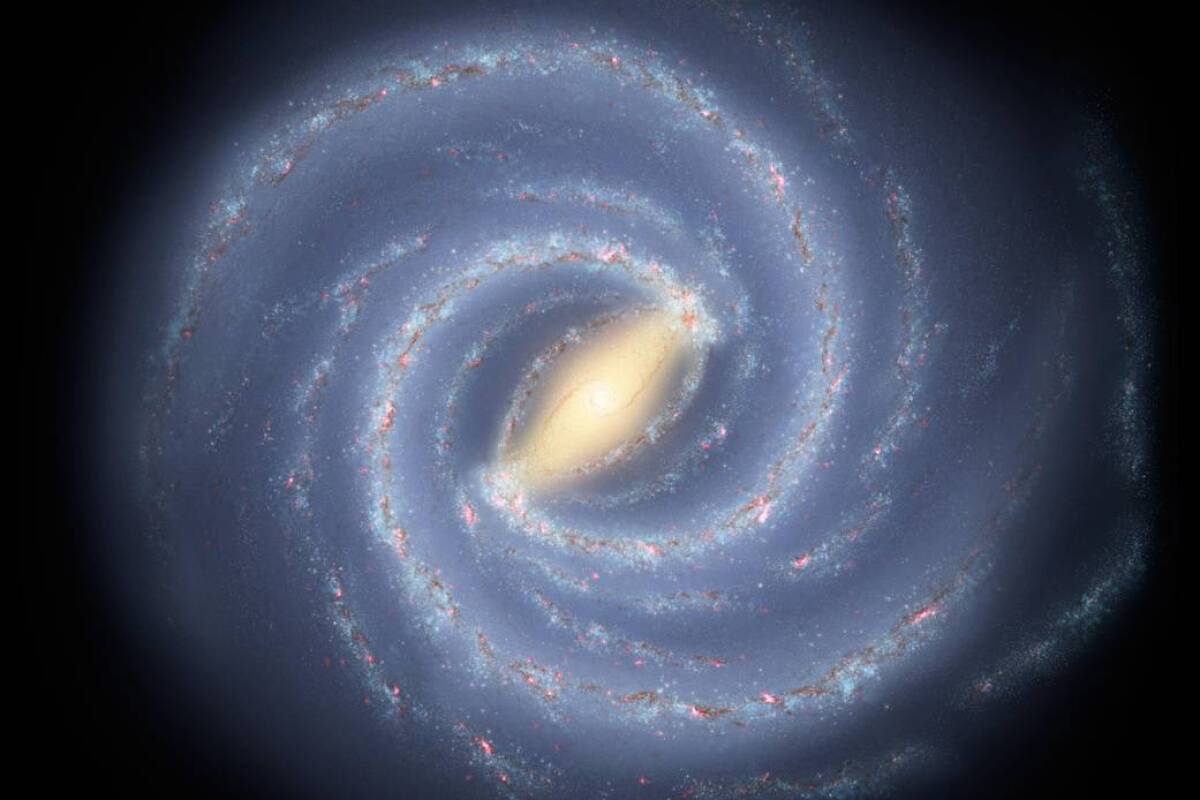
This is particularly interesting because acording to our recieved knowledge of physical element creation, this is not possible.
Now do understand that my Cloud Cosmology expects natural element creation at the sublight boundary of our Galaxy creation. These elements then migrate slowly back toward the center. Still thin on the ground and most will be hydrogen anyway.
Again dark matter, which is conjectured to be neutron pairs, will form up clumps then able to decay to known elements. By the by, such decay will throw of energetic particle debris which implies that we should be recieving such a bath from all directions. sounds like those mysterious cosmic rays to me which are also sub light.
Again dark matter, which is conjectured to be neutron pairs, will form up clumps then able to decay to known elements. By the by, such decay will throw of energetic particle debris which implies that we should be recieving such a bath from all directions. sounds like those mysterious cosmic rays to me which are also sub light.
We finally understand cosmic rays and understand that they are part of our galaxy which is the sublight component of the act of creation that looks like a Big Bang
Key chemical found at the edge of galaxy suggests alien life is common
December 04, 2023
https://newatlas.com/space/phosphorus-galaxy-edge-alien-life-common/?
An artist's impression of the Milky Way galaxy, which a new study has found could be more habitable than previously thought
Phosphorus – a key ingredient for life as we know it – was thought to be relatively rare in space. But now, astronomers have detected a surprising amount of the stuff on the fringes of the galaxy, suggesting life may be more common in the cosmos.
Life on Earth requires six critical elements: nitrogen, carbon, hydrogen, oxygen, phosphorus and sulfur (NCHOPS). Most of those are relatively easy to come by, as they’re blown into space as common low-mass stars reach the end of their lives. Phosphorus, meanwhile, is much rarer, and as such is generally considered the limiting factor for life in the universe.
“To make phosphorus, you need some kind of violent event," said Lucy Ziurys, corresponding author of the study. “It is thought that phosphorus is created in supernova explosions, and for that, you need a star that has at least 20 times the mass of the Sun. In other words, if you're going to have life, you better be near a supernova, if that's indeed the only source where phosphorus is created.”
But in the new study, astronomers have detected phosphorus where there “shouldn’t” be any, suggesting unknown mechanisms for making phosphorus, which may turn out to be more abundant than we gave it credit for.
The team used the radio telescopes at the Arizona Radio Observatory and IRAM in Spain to observe a molecular cloud named WB89-621. And sure enough, they detected the telltale signs of phosphorus monoxide and phosphorus nitride.
This cloud is located about 74,000 light-years away from the center of the Milky Way, which is almost twice as far out as phosphorus had previously been found. There on the outskirts of the galaxy, there just isn’t enough matter to form the massive stars that go on to produce phosphorus when they die.
So how did it get there? Previously proposed mechanisms include "galactic fountains” that funnel it from the center and spray it out across the disk. But little evidence has ever been found to support the story, and even if they did exist the fountains aren’t expected to reach much farther than about 3,000 light-years out. Instead, the team suggests that low and intermediate mass stars could produce phosphorus by stripping neutrons out of carbon atoms and adding them to silicon atoms.
“This has been postulated in theory, and so it could possibly explain another source of phosphorus in addition to supernovae, and I think we have good evidence supporting this now,” said Ziurys.
Other teams have found evidence of phosphorus-rich stars, which could be contributing too. This astrochemical discovery could have major implications for alien life. It’s been presumed that the relative rarity of phosphorus would have put a hard limit on how common life is throughout the universe. But if it can be found throughout our galaxy, perhaps we’ve been ruling out promising planets prematurely.
“For a planet to be habitable to life as we know it, you have to have all the NCHOPS elements, and their presence defines the galactic habitable zone," said Ziurys. “With our discovery of phosphorus, all of them have now been found at the edge of the galaxy, which extends the habitable zone all the way out to the galactic outskirts.”
The research was published in the journal Nature.
No comments:
Post a Comment